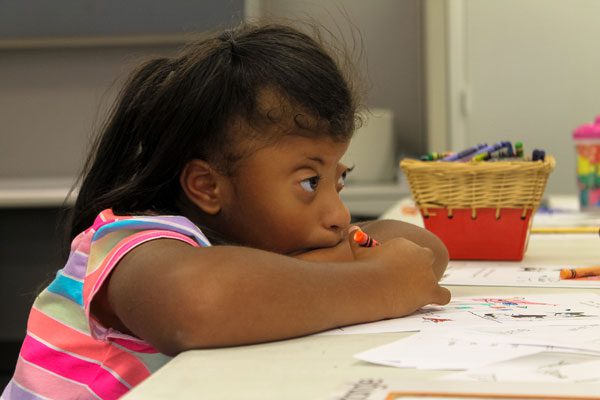- Board of Directors
- Buddy Walk
- Calendar
- Cart
- Checkout
- Consent to attend IEP
- Contact Us
- COVID-19
- Disaster Preparedness for Families with Special Needs
- Donate Now
- Download TEFRA Application
- Education
- Families
- Family Connection of South Carolina
- Find a Provider
- Get Involved, How to Help
- Get involved, Volunteer Today
- Healthcare
- Hopes & Dreams
- IDEA and McKinney-Vento Laws: Rights and Resources for SC Families
- Login
- Look! Photography Exhibit
- Adam
- Adaya
- Adeline C
- Ahmir S
- Aiden
- Aiden Elijah T
- Alexander
- Alexia
- Alexis S
- Amanda D
- Amani G
- Amaya Y
- Amden Alecole H
- Amelia H
- Ana Sofia
- Ana Sofia
- Ana Sofia B
- Andrew M
- Andrew P
- Angel C
- Angela Isabella
- Anthony Y
- Ariana
- Ariana
- Ariana
- Art Walk
- Arthur “Row” G
- Ashanti
- Asher B
- Ashley Altagracia R
- Ashley R
- Ashley R
- Austin
- Austin A
- Ava W
- Avery
- Avery B
- Avery B
- Avik
- Avik
- Axel
- Axel
- Baylee
- Benjamin
- Benjamin H
- Beverly C
- Blake and Evan B
- Bo
- Braden
- Braden
- Braden G
- Bradley L
- Brandon M
- Braydon and Paisley M
- Brett and Jacob
- Brian G
- Brian G
- Bryann
- buy art
- Caden D
- Cairo
- Cairo
- Caleb R
- Camari
- Camari B
- Cameron
- Cameron M
- Carolyn W
- Carson E
- Catherine
- Charles C
- Charlotte
- Chesnee H
- Cierra R
- Claire F
- Claire F
- Clara
- Colton S
- Cooper P
- Coraline J
- Corban
- Corbin B
- Cortland
- Cortland
- Cortland L
- Cortland L
- Court H
- Dade B
- Daisy
- Daisy N
- Daisy N
- Dakota
- Dakota M
- Dale “Tripp” H
- Daniel B
- Daniel S
- Daniela G
- David E
- David E
- Daxton
- Deklan
- Delaney
- Delaney
- Dhylan L
- Diana
- Diego G
- Drew
- Drew
- Duncan and Tanner
- Dylan
- Dylan and Jackson
- Dylan and Jackson M
- Dylan and Jonathan G
- Dylan M
- Eli
- Eli
- Eli J
- Eli S
- Elijah F
- Elijah F
- Elijah H
- Elijah L
- Elijah L
- Eliza
- Eliza
- Eliza
- Ella B
- Ella B
- Ellington
- Ellington
- Elsie R
- Emerson
- Emily L
- Emily S
- Emma
- Emma P
- Eriyanna M
- Ethan B
- Ethic B
- Eugene J
- Evelyn M
- Faith
- Faith R
- Gael Armando B
- Genesis H
- Giovanna F
- Grace H
- Graham L
- Grayson T
- Greyson W
- Haidyn J
- Haidyn J
- Hall T
- Halle
- Hannah Grace
- Hannah N
- Harrison W
- Hayes R
- Henry M
- Ian F
- Isabella Cristina
- Isaiah B
- Isaiah B
- J.T. R
- J’vien M
- Jack
- Jack M
- Jack S
- Jackson
- Jackson and Parker T
- Jackson K
- Jackson K
- Jackson M
- Jacob W
- Jagger J
- Jailynn L
- Jakyrie H
- James C
- James R
- Jamie V
- Jasmine
- Javier
- Javier F
- Javier F
- Javier F
- Jaxon M
- Jaylen
- Jaylen
- Jaylen E
- Jeremy S
- Jerry S
- Jesus
- Jocelyn F
- Joe
- Jonathan A
- Jonathan, Dylan, and Glendy G
- Jordan M
- Joshua S
- Josue C
- Judah
- Judah
- Jude G
- Juliana D
- Juliana D
- Juliezer
- Juliezer
- Julissa R
- Ka’Niya
- Ka’Niya B
- Ka’Niya B
- Ka’Niya B
- Kaden M
- Kaitlyn L
- Kate C
- Kate M
- Katie H
- Katie H
- Kayln R
- Kayln R
- Keagan C
- Kelly
- Kelly
- Kieran S
- Kiersten B
- Kiersten B
- Laila W
- Levi R
- Lia
- Liam S
- Lila and Grayson S
- Lila B
- Lizzy
- Lizzy
- Logan B
- Logan M
- Look Participant Application
- Look Photographer Application
- look-2001
- look-2003
- look-2008
- look-2012
- look-2013
- look-2014
- look-2108
- look-22000
- look-24000
- LOOK! 2021
- LOOK! 2022
- LOOK! 2023
- LOOK! 2024
- Luke R
- Lydia Grace J
- Maddie
- Madelyn
- Malachi
- Malachi J
- Mallory
- Mallory
- Martin Family
- Mason
- Matthew
- McKenna M
- Meredith
- Mia S
- Mia S
- Micah C
- Michelle
- Michelle L
- Mila
- Milla
- Milla M
- Millie and Jace
- Miranda
- Myles
- Nasir W
- Nasir W
- Nicholas
- Nicholas H
- Noah J
- Novah M
- Olive D
- Oliver
- Oliver B
- Oliver B
- Pace
- Pace
- Paisley
- Paisley
- Paisley P
- Parker
- Parker
- Parker M
- Parker M
- Parker M
- Patience C
- Patriss
- Philip Rouse L
- Photo Release
- Qu’Mari
- Qu’Mari
- Qu’Mari D
- Raegan
- Raegan
- Raegan H
- Renatta and Xareny D
- Rosemary M
- Rosemary M
- Sam
- Sarah
- Sarah O
- Savannah
- Shani W
- Shawn J
- Shelby
- Shelby
- Skylah W
- Skylar H
- Sophia
- Stephanie V
- Stephen M
- Sullivan S
- Support LOOK! 2021
- Susan Faith E
- Susan Faith E
- Susana G
- T.J. M
- Terrence
- Theo H
- Tiffany
- Travis W
- Tripp H
- Warren “Ayers” H
- William Ethan B
- William K
- William S
- Zander C
- Zeron G
- Zeron G
- Zoe
- Zoe
- Zoey W
- Zoey W
- Zoey W
- Make a Donation
- Media Information
- Midlands Gives
- My account
- News
- News
- Newsletter Sign-up
- Order Materials
- Orders QR
- Our Impact
- Our Work
- Para Español
- Parent to Parent Support
- Profile
- Programs and Services
- Provider Form
- Referido
- Referral
- Resources
- Social Media
- Sponsorship Opportunities
- Staff Referral
- Summer Camps
- Support Our Work
- test
- Training
- Volunteer Leadership
- Woo Products
- Year End Giving
- Your Child’s Journey Begins
- Your Referral has been Submitted
Preschool
If your child is 3 years or older, they may qualify for preschool services under Part B of the Individuals with Disabilities Education Act (IDEA).
It is the local school district’s responsibility to identify, screen and evaluate children who have disabilities and may be entitled to special education services.
Eligibility – Eligibility for Part B services are based on observation, screening, and evaluation results.
IEP and Services – If your child qualifies for services, a Preschool School Team, with you as a member, will decide what educational goals will be on your child’s Individualized Education Plan, IEP.
Cost of Services – Services included in the Individualized Education Plan (IEP) are provided at no cost to your family. Under federal law, this is called FAPE: Free Appropriate Public Education.
Comparison of The BabyNet Program (Part C) and the Preschool Program (Part B)
| Birth through age 3 | Age 3 through 21 |
| Is inclusive of the family’s needs | Focuses on the child’s needs |
| Services provided at home | Services provided at school |
| Families are assigned a service coordinator | No service coordinator |
| Generally reviewed every 6 months | Generally reviewed once a year |
| IFSP Team makes decisions | IEP Team makes decisions |
| Governed under Part C of IDEA | Governed under Part B of IDEA |
Ideas for a Smooth Transition
The IDEA requires a minimum 6 month transition period from early intervention to preschool. Parents and schools can work together to make the transition process and preschool experience meaningful and productive.
The first and most essential step is to build a strong relationship between the parent and the school. Successful outcomes are most likely to be reached when both the school and family are working together toward the same goals. Some additional steps to support a transition into preschool are:

1. Prepare for the IFSP/IEP transition meetings. Families should visit preschools and meet with the preschool teachers and other staff prior to the transition meeting. It is often helpful for parents to bring along another parent, family member, or the family’s early intervention specialist so that there is someone with whom they can discuss their visit. Parents should be familiar with their rights as well as service obligations for their child under Part B of IDEA prior to the transition meeting.
2. Think of preschool as transition. Another consideration is to recognize that transition doesn’t have to happen in 6 months. If we think about the entire preschool experience as the transition between early intervention and school-age programs, we can combine the benefits of family-focused services with the language and social experiences of early education programs.
3. Maintain consistent and effective communication. Families need to know that their input is valued. Schools should listen carefully to what families are saying. Parents are encouraged to ask questions and seek clarification of information.
4. Establish roles and expectations together. It is helpful for parents to know what to expect from the school, as well as what is expected of them. Discuss this relationship with your child’s school so that everyone is clear about respective roles and responsibilities.





